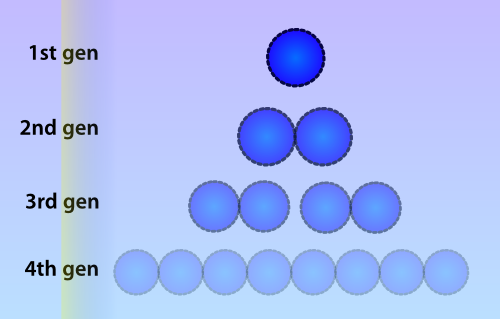Team:Amsterdam/project/applications/
From 2012.igem.org
(Difference between revisions)
Mmendeville (Talk | contribs) |
Mmendeville (Talk | contribs) |
||
| (2 intermediate revisions not shown) | |||
| Line 37: | Line 37: | ||
<h4>Clean Water Supply Detection</h4> | <h4>Clean Water Supply Detection</h4> | ||
| - | If we are able to use our bacteria in the environment, our Cellular Logbook can be used to sense toxic signals in the environment. One of the places in need for toxic detection are the water supplies, ponds and rivers in the Netherlands. We had a talk with Ron van der Oost from Waternet [https://www.waternet.nl/about-waternet/]. During this talk we came to the conclusion that a multi sensor that is able to detect 20 different toxic groups, and is able to detect if the concentration has surpassed a specific amount, would be greatly cost reducing compared to the current setup for detecting if a water supply is clean of toxics, which can cost up to 40.000 euros / place. To achieve this we need a system that contains the bacteria, so no bacteria will roam in the environment. The KWR Water Cycle Research Institute[http://www.kwrwater.nl/] has developed a flow-trough sensor that can also serve as a container for our sensor[http://www.kwrwater.nl/uploadedFiles/Website_KWR/Publicaties_%40_Producten/Posters/Development%20of%20a%20water%20toxicity%20sensor%20based%20on%20genetically%20modified%20bacteria.pdf]. | + | If we are able to use our bacteria in the environment, our Cellular Logbook can be used to sense toxic signals in the environment. One of the places in need for toxic detection are the water supplies, ponds and rivers in the Netherlands. We had a talk with toxicologist Ron van der Oost from Waternet [https://www.waternet.nl/about-waternet/]. During this talk we came to the conclusion that a multi sensor that is able to detect 20 different toxic groups, and is able to detect if the concentration has surpassed a specific amount, would be greatly cost reducing compared to the current setup for detecting if a water supply is clean of toxics, which can cost up to 40.000 euros / place. To achieve this we need a system that contains the bacteria, so no bacteria will roam in the environment. The KWR Water Cycle Research Institute[http://www.kwrwater.nl/] has developed a flow-trough sensor that can also serve as a container for our sensor[http://www.kwrwater.nl/uploadedFiles/Website_KWR/Publicaties_%40_Producten/Posters/Development%20of%20a%20water%20toxicity%20sensor%20based%20on%20genetically%20modified%20bacteria.pdf]. |
<h4>Compound Emission Detection at Industrial Sites</h4> | <h4>Compound Emission Detection at Industrial Sites</h4> | ||
| - | The Cellular Logbook can be used at fabrics to measure compound emission. During a talk with dr. Bart van | + | The Cellular Logbook can be used at fabrics to measure compound emission. During a talk with dr. Bart van der Burg, Chief Scientific Officer at BioDetection Systems b.v.[http://www.bds.nl/], who currently use bioassays to detect compounds in samples, we came to the realization that the Cellular Logbook can be used as a cheap detection system for compound emission of industrial sites. If the Cellular Logbook cells are captured in a system that prevents them from being released in the environment, the Cellular Logbook can be placed at multiple locations, after which they are able tell us where, when and in what concentration a certain chemical has been detected. |
<h1>Global Challenges</h1> | <h1>Global Challenges</h1> | ||
Latest revision as of 05:36, 25 September 2012
 "
"






